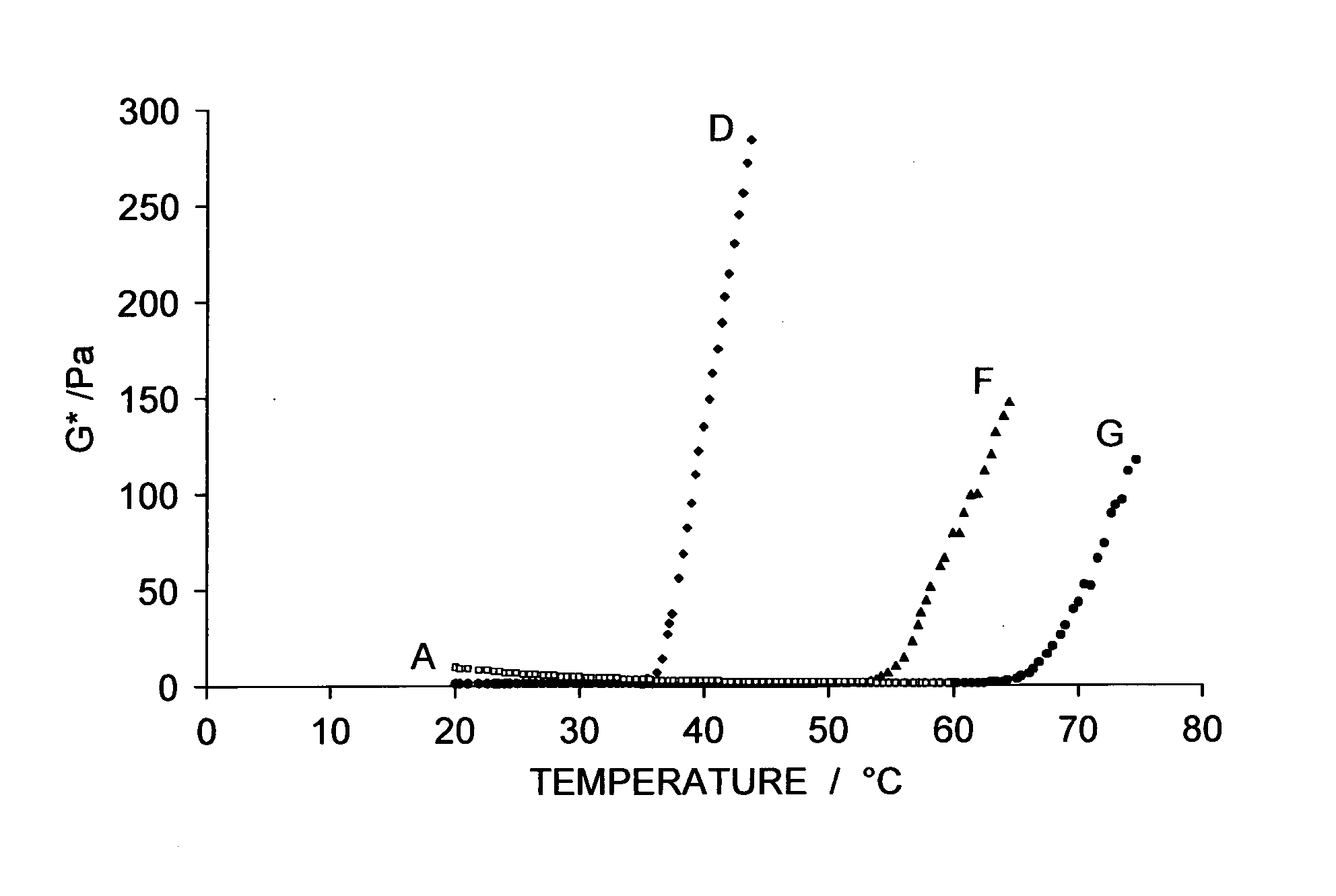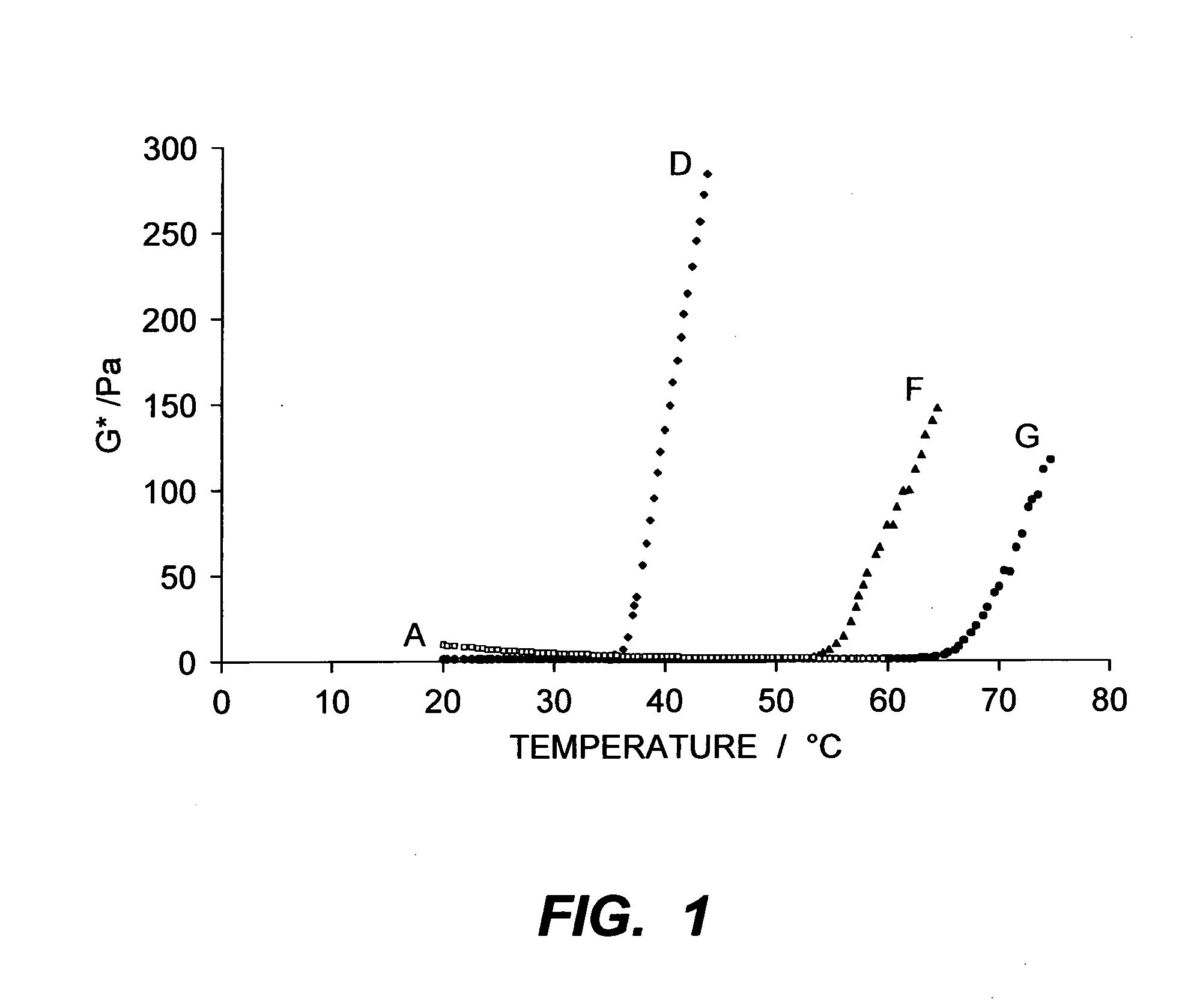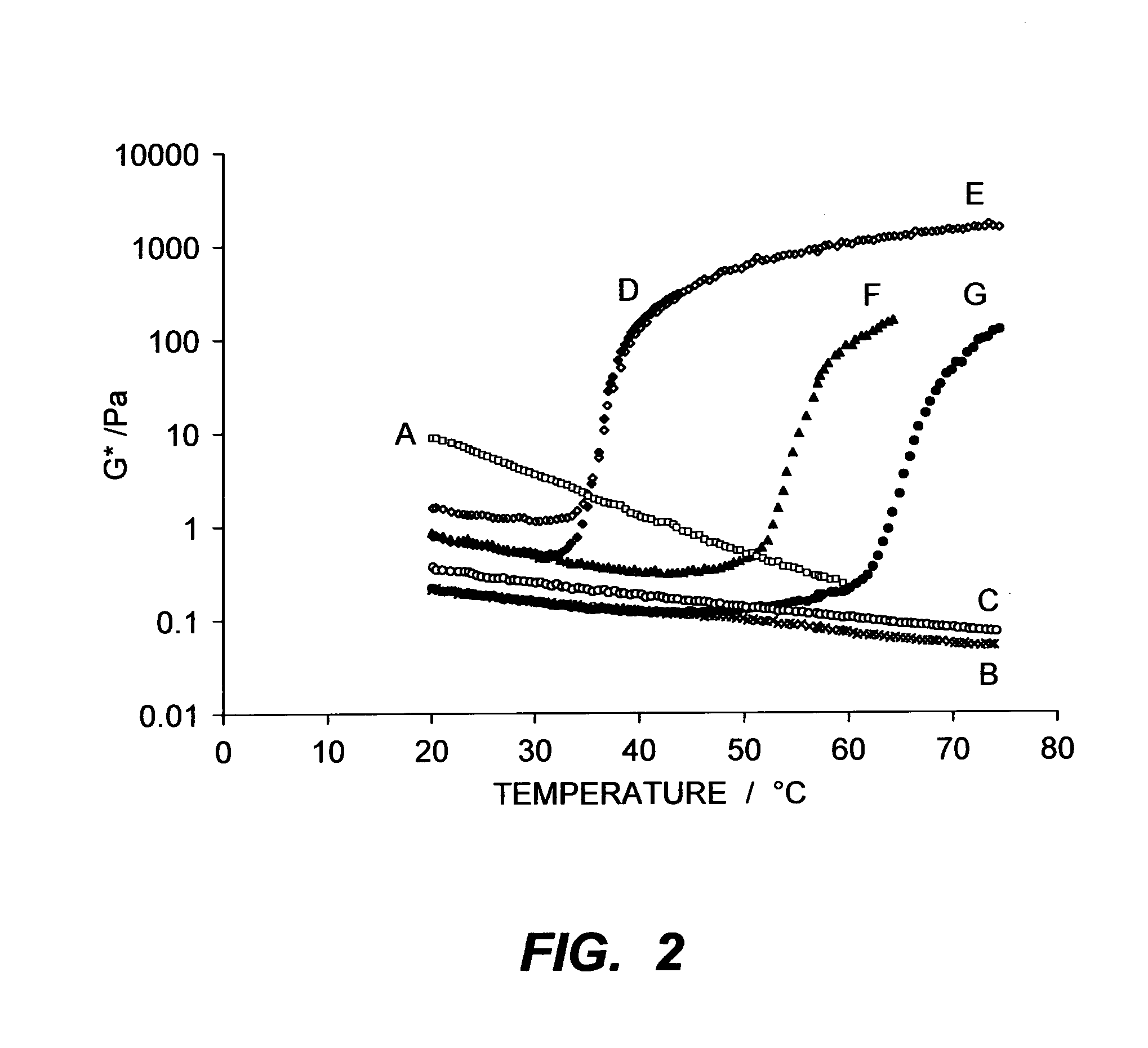Thermally-responsive dispersants for media formulations
- Summary
- Abstract
- Description
- Claims
- Application Information
AI Technical Summary
Benefits of technology
Problems solved by technology
Method used
Image
Examples
examples
Synthesis of Dispersants
[0110]The dispersants may be prepared by methods analogously to the examples herein and in accordance with Makromoleculare Chemie, (1992), 193(9), pages 2505-2517.
example a
Synthesis of Compound (I-1a)
[0111]Mercaptosuccinic acid (1.50 g, 0.010 mol), N-isopropylacrylamide (56.58 g, 0.500 mol) and 2,2′-azobis(2-methylpropionitrile) (0.56 g) were suspended in methanol (1000 ml) in a 3N flask equipped with a reflux condenser. The mixture was degassed for 20 min. by bubbling through argon and then brought to reflux under argon atmosphere. Reflux was continued for a total of 40 h to ensure complete consumption of the monomer. The resulting solution was evaporated under reduced pressure to give a white solid (58.50 g, 100%). Analysis was consistent with the desired structure.
example b
Synthesis of Compound (I-5a)
[0112]Mercaptosuccinic acid (0.375 g, 2.50 mmol), N-isopropylacrylamide (11.32 g, 0.100 mol), acrylamide (1.78 g, 0.025 mol) and 2,2′-azobis(2-methyl-propionitrile) (0.13 g) were suspended in methanol (250 ml) in a 3N flask equipped with a reflux condenser. The mixture was degassed for 30 min. by bubbling through argon and then brought to reflux under argon atmosphere. Reflux was continued for a total of 24 h to ensure complete consumption of the monomer. The resulting solution was evaporated under reduced pressure to give a white solid (13.58 g, 100%). Analysis was consistent with the desired structure.
PUM
| Property | Measurement | Unit |
|---|---|---|
| Dimensionless property | aaaaa | aaaaa |
| Particle size | aaaaa | aaaaa |
| Particle size | aaaaa | aaaaa |
Abstract
Description
Claims
Application Information
 Login to View More
Login to View More - R&D
- Intellectual Property
- Life Sciences
- Materials
- Tech Scout
- Unparalleled Data Quality
- Higher Quality Content
- 60% Fewer Hallucinations
Browse by: Latest US Patents, China's latest patents, Technical Efficacy Thesaurus, Application Domain, Technology Topic, Popular Technical Reports.
© 2025 PatSnap. All rights reserved.Legal|Privacy policy|Modern Slavery Act Transparency Statement|Sitemap|About US| Contact US: help@patsnap.com



